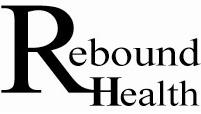You are here: |
Topic: Low Back Pain and Lumbar Discs |
 |
|
The Lumbar discs are 90% water so that they quickly flow to balance the weight over the entire joint. This makes them a target for bacteria and fungi; the same way a tree root follows water and sewer lines to find water from leaks that follow the sandy pipe bed.
Once a bacteria of fungi get inside they consume the water and the disc becomes slower to balance the load and with less water is less tall so that the tendons and muscles are not in the original optimal angles. The whole joint becomes less flexible and out of place to best carry the load. The muscles and tendons become strained and begin to scar that gives even more problems with reduced range of motion. L5 is the final joint from the spine to attach to the pelvis. The pelvis moves independent of the spine. When sitting the spine gives the all of the upper body movement. This is greatest when driving or sitting which is not a normal position for animals and is mostly limited to humans.. The same for walking. No other animal has a lock-out knee and because of this walking is not a natural movement. Other bi-pedal animals have a bent knee which adds cushion to weight and keeps the back in a more stable position. Walking and sitting are not natural positions for animals. We do better with squatting and climbing stairs. This keeps the back protected and in better position. Climbing stairs keeps the knees bent. Coming down stairs can be hazardous if the knee is fully extended and the shock is transferred to the spine. Stepping down is best when the ball of the foot graduates the load into the foot. With extreme weight the elephant walks on it's toes to help with the transfer of weight. Strengthening the legs can help. Above L5 the entire upper body hangs off of the front side of the spine. The ribs are counter weighted by the low back lordosis curving forward as the head is counter weighted by lordosis of the neck (cervical) spine. At the ribs they curve forward that is offset by the back curving backward (kyphosis). This makes them balance each other with the heavy heart, stomach and liver in the middle. A loss of neck or lumbar spine put the L5 disc in compromised angles as it is wedge shaped to accommodate the lordotic curve. Stomach fat and pregnancy cause unusual weight loads. Computer work puts the weight of the arms loading the lumbar spine extra. Many people sit head forward position (kyphosis) to read monitors. The arm weight, head forward and simple sitting positions all wreck havoc on the lumbar spine with disc shape changes that then do not work with other positions and movements. When working on a computer the chair height should allow the feet on floor with knees below the butt. Sitting more to the edge of a stool is better in a position that keeps the lumbar lordosis in your normal curve. People have their own unique normal back position that should be maintained. The terms for extra lordosis are many and include; hyperlordosis, hollow back, saddle back and swayback. Differences are in part due to the L5-S1 disc being wedge shaped and varies in angle between people. The stomach muscles attach between the front of the pelvis to the ribs to pull them together. A sit-up will exercise them. To pull the spine forward and lift the ribs there are some muscles along the spine but stronger are those from the spine to the front of the pelvis. This is exercised with leg lifts and the muscle is called the transversis. It also holds the stomach in. Along this path are tendons which help to hold the kidneys in place. The transversis muscle is very important in low back pain. Another muscle that supports the low spine is called the psoas. It attaches just to the top of the legs and runs through the pelvis to attach on the lumbar spine. It fires just at the initiation of a step to slightly move the pelvis back and the leg forward. We call this the tenderloin, beef loin or sirloin in the meat shop. Some authors call the psoas muscle the most important muscle in the body. It helps to keep the feet pronated (pointing slightly outward) as we walk to help keep the body in balance. Tightness of the psoas can result in low back pain by compressing the lumbar discs. We have pain from the psoas muscle when it hurts to lie on our stomach. See Also; Topic: L4-L5 This is not intended to make any claim nor is it intended to be a diagnosis. It is my opinion. -- Bryon ( 0 Votes On This Page ) |

